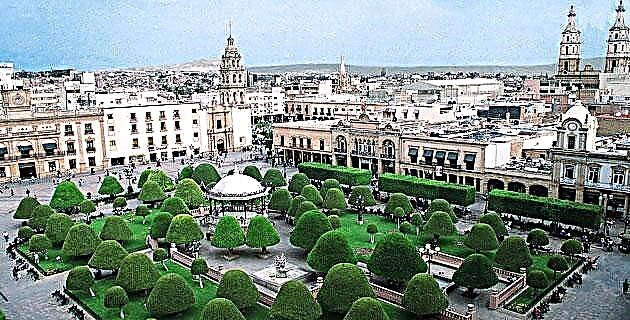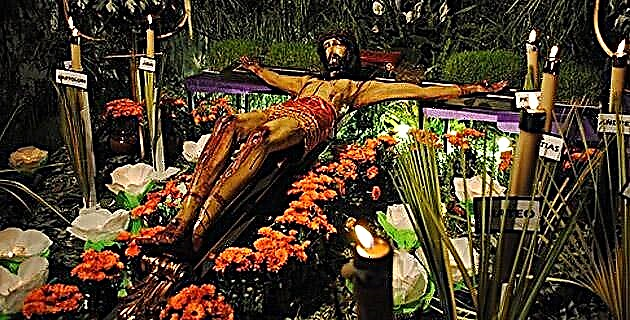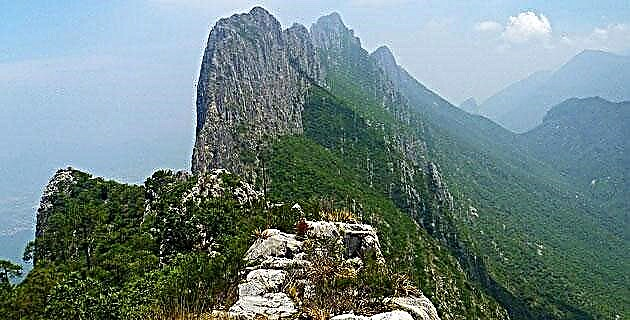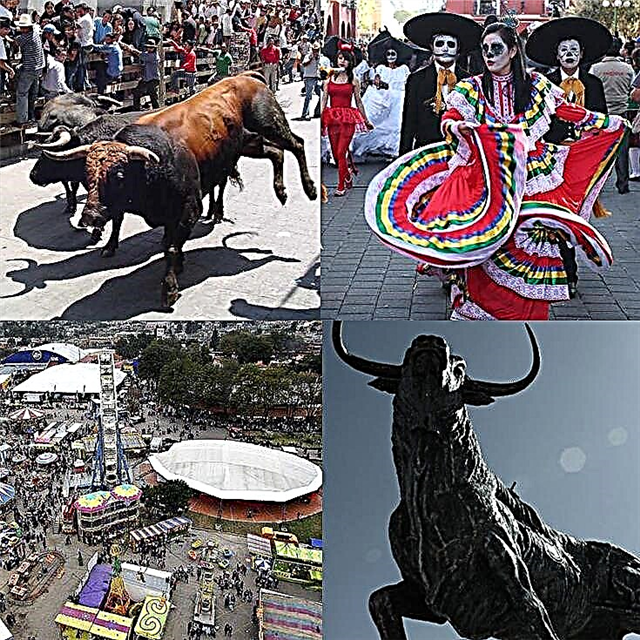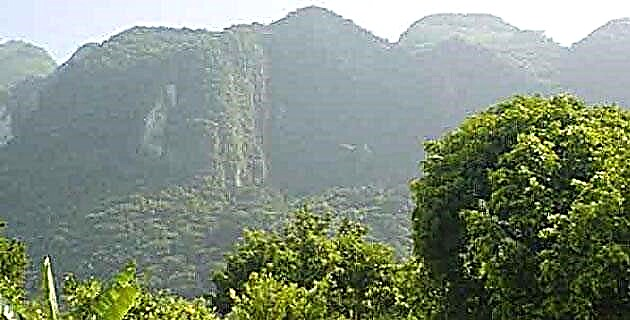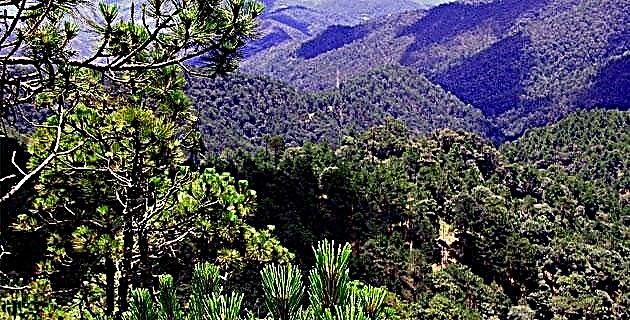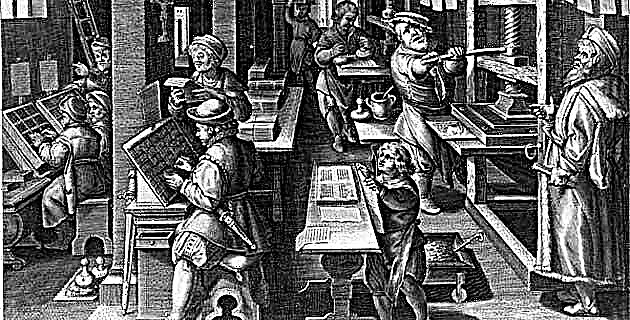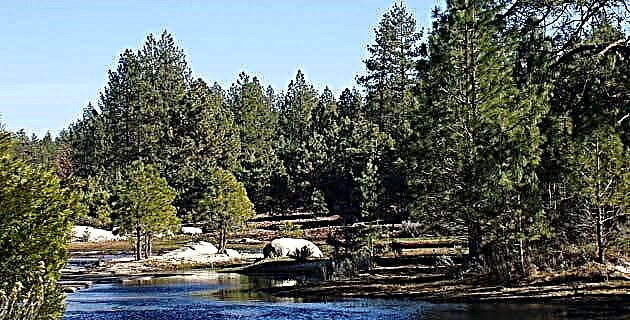
In the state of Baja California is the Hanson Lagoon, a wonder of nature located within the 1857 Constitution National Park. Get to know it!
In the last century, a Norwegian called Jacob hanson came to Baja California practically as a hermit, and acquired a property in the central area of the Sierra de Juárez, where established a ranch in order to raise quality cattle.
Legend has it that the Norwegian's livestock activity generated a real fortune, which he buried in a secret place within his property, since there were no banks to deposit the money in the surroundings. One day, taking advantage of the loneliness in which Hanson lived, some outlaws assaulted and murdered himBut neither they nor the many explorers who reached the place could find the treasure that the Norwegian jealously hid.
However, Hanson left for posterity another treasure that he protected in life and that persists to this day: a vast lagoon within what was his property, surrounded by pine forests and unique in Baja California for its unique beauty.
ROAD TO HANSON LAGOON
Hanson Lagoon, officially named Juárez Lagoon, is located in the 1857 Constitution National Park, located in the municipality of Ensenada, Baja California. Given the beauty and ecological importance of the area, it became the property of the Nation in 1962, to join the National System of Protected Natural Areas in 1983, through a decree of President Miguel de la Madrid.
Leaving Ensenada on the road to San Felipe, the National Park is accessed through a deviation that leads to the town of Black eyes, located at kilometer 43.5 of said road. This section of the mountain range is mostly covered by shrub vegetation, which due to its distribution is called chaparral. In it we find the ashen shack, the red shank, the wadding, the encinillo and the chamomile.
After 40 km of dirt roads, usually in good condition, the landscape turns into a dense forest made up mainly of ponderosa, jeffrey and pinyon pines. A humble sign indicates access to the park.
THE NATIONAL PARK CONSTITUTION OF 1857 AND ITS LAGOON
As a legacy of the Sedue, the park has some rustic cabins of wood that are rented to visitors at reasonable prices. In addition, there is a two-story gallery, currently unoccupied, which was once a hotel with about twenty rooms. The foundation gave way under the weight of the structure, which tipped dangerously forcing it to be disabled. And behind the cabins and the old hotel is the smaller of the two bodies of water that make up the Hanson Lagoon.
The lagoon is made up of rainwater contained in a depression in the granite rock that forms the Sierra de Juárez. Being this a watershed that divides the Baja California peninsula in half, we find that the climate in the west (towards the Pacific) is more humid than in the east (towards the Gulf of California). During winter, as it is the rainy season, the precipitation rate on the western slope of the sierra exceeds the evaporation rate, which allows the accumulation of water in the lagoon. At that time temperatures become very low, and for this reason it is not uncommon for there to be frosts and snowfalls that keep the water level high; However, during the summer the evaporation caused by the sun, added to the absence of rain, cause the level to drop considerably.
Around the lagoon, there are monoliths of great size and whimsical shapes on which pines and cacti grow. These mountains are inhabited by squirrels and birds, and visited by park visitors. The granite rocks that emerge from the ground present what is known as exfoliations, that is, layers of rock that separate from the core, weathering and eroding, giving the landscape a very particular appearance.
A LITTLE HISTORY
In ancient times, Sierra de Juárez It was inhabited by an indigenous people called kumiai, dedicated mainly to gathering, hunting and fishing. The Kumiai left samples of their culture in many caves in the mountains, where it is possible to find cave paintings and mortars carved into the rock. Currently, the descendants of the ancient Kumiai live in the towns of San José de la Zorra, San Antonio Necua Y La Huerta, in the municipality of Ensenada, as well as in some ranches in the municipality of Tecate.
In 1870 and 1871 they were discovered gold deposits in the area of Real del Castillo, near Ojos Negros, and the gold rush that was unleashed led to new explorations, so in 1873 a large number of miners arrived in the Sierra de Juárez, where even richer deposits were found. However, the extremely rugged condition of the sierra made mining development in the area extremely difficult, and after the gold rush it declined sharply.
Despite the fact that at present the mineral production of the area is very scarce, it is possible to find small gold particles in the deposits of pleasure, that is, in the granite sand of the local streams. It is enough to carry a deep metal plate and a lot of patience to apply the artisan technique that allows separating the sand from the coveted gold dust.
FLORA AND FAUNA AROUND THE HANSON LAGOON
Despite the poaching that occurs in the region, you can still find the black-tailed mule deer, the Cougar and the bighorn sheep, in addition to minor mammals like hares and rabbits, skunks, coyotes and field rats. The rattlesnake, lizards, chameleons, frogs and toads, scorpions, tarantulas and centipedes also abound.
The birds They are represented by the woodpeckers, the golden eagle, the hawk, the falcon, the quail, the owl, the roadrunner, the buzzard, the raven and the pigeons. In winter, the lagoon is covered with migratory species from the north, such as ducks, geese and shorebirds.
THE DETERIORATION OF THE AREA
Despite the efforts of many people who since Jacob Hanson's time have been concerned with preservation of the areaThis shows the signs of deterioration caused by the lack of education of many visitors.
Around the lagoon you can see the pints of those who, perhaps in a crude attempt to perpetuate themselves in the memory of the place, have left their name stamped with paint on countless rocks. In the same way, waste, garbage and all kinds of human footprint They far exceed the maintenance capacity of the park staff, who cannot cope with the irresponsible neglect of a surprising number of tourists.
Adding to this, the constant grazing that suffers the periphery of the lagoon has almost completely eliminated grasslands and other vegetation in this area, and with them the natural nesting habitat of several species of birds that could reproduce in the area. It is inexplicable that in a National Park whose objectives are the protection of natural resources, the increase of its flora and fauna and the preservation of its ecosystems, the development of a livestock activity is allowed that causes severe damage to what it is trying to protect .
The Hanson Lagoon is a natural treasure that we must conserve for posterity. It is the duty of the authorities and visitors to ensure the maintenance of this invaluable landscape.
IF YOU GO TO HANSON LAGOON
From Ensenada take the road to San Felipe and at the height of the town of Ojos Negros there is a dirt road that will take you to the Constitución de 1857 National Park where the lagoon is located. You will find all the services in Ensenada.

